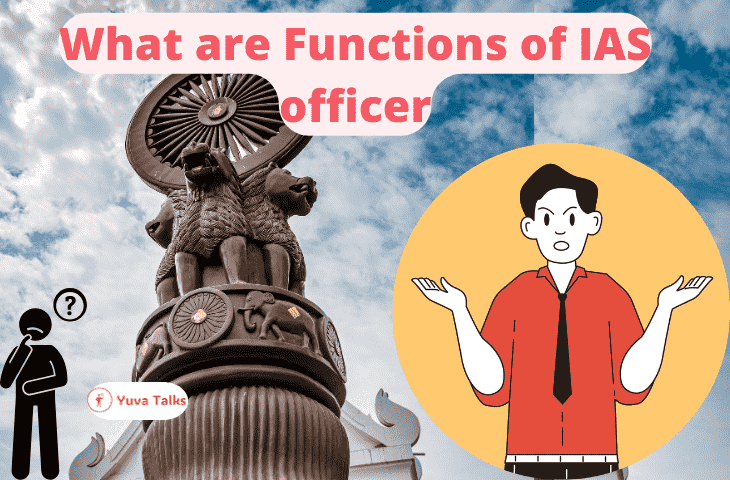An IAS officer is in charge of upholding law and order as well as managing all administrative tasks that fall under the Government of India’s jurisdiction.
Many individuals across the nation aspire to join the Indian Administrative Service (IAS), a prestigious branch of the civil services. An IAS officer’s life is filled with challenges, but the opportunity to positively impact people’s lives is significant. As permanent executives, civil servants can provide guidance to political leaders and assist ministers in formulating and implementing policies. According to the history of the IAS, the public service commission in India was established on October 1, 1926.
The IAS is often seen as a highly esteemed position within the Indian government. To pursue a career in the Indian Administrative Service and qualify for government employment, one must successfully pass all the necessary entrance examinations.
The Overview of the History of the Indian Administrative Service (IAS)
In India, the Indian Administrative Service (IAS) stands as the most coveted among the country’s 24 esteemed civil services. Each year, millions of hopefuls apply for the UPSC civil services exam, aspiring to serve in various governmental roles. Regarded as the pinnacle of public sector careers, the IAS holds a distinguished position in Indian governance.
The IAS traces its origins to 1946 when it was formally established, succeeding the Indian Imperial Service, which operated from 1893 to 1946. Prior to its establishment, the administrative framework in India evolved gradually, culminating by 1934 with the establishment of seven All India Services and five Central Departments.
Also Read: Top 10 Most Expensive Paintings in the World 2024: Million-Dollar Artworks
IAS Officer Responsibilities and Duties
In India, the Indian Administrative Service (IAS) stands as the most coveted among the country’s 24 esteemed civil services. Each year, millions of hopefuls apply for the UPSC civil services exam, aspiring to serve in various governmental roles. Regarded as the pinnacle of public sector careers, the IAS holds a distinguished position in Indian governance.
The IAS traces its origins to 1946 when it was formally established, succeeding the Indian Imperial Service, which operated from 1893 to 1946. Prior to its establishment, the administrative framework in India evolved gradually, culminating by 1934 with the establishment of seven All India Services and five Central Departments.
Also Read: Top 10 Powerful World Leaders: A Global Leadership Ranking 2024
Politics and Public Policy
In India, the Indian Administrative Service (IAS) stands as the most coveted among the country’s 24 esteemed civil services. Each year, millions of hopefuls apply for the UPSC civil services exam, aspiring to serve in various governmental roles. Regarded as the pinnacle of public sector careers, the IAS holds a distinguished position in Indian governance.
The IAS traces its origins to 1946 when it was formally established, succeeding the Indian Imperial Service, which operated from 1893 to 1946. Prior to its establishment, the administrative framework in India evolved gradually, culminating by 1934 with the establishment of seven All India Services and five Central Departments.
Also Read: Top 10 Highest Mountain Peaks In India: A Mountaineer’s Guide
Power
In this role, you will have the authority to manage all tasks involved in developing the territory under your supervision. You will be granted the necessary power to ensure the maintenance of law and order.
Upon reaching this level, you will be appointed to the district level of the Indian Administrative Service, where you will be acknowledged as a subordinate officer.
This position comes with significant responsibilities and the authority to implement plans aimed at advancing the development of the district you oversee.
You may also serve as a state secretary or oversee a public sector undertaking (PSU).
Position of Power
When you become a member of the IAS, you will have the authority, resources, and opportunity to assist society’s underprivileged.
You will oversee the recovery of lost funds and ensure the efficient functioning of tax courts.
In your executive role, you will act as a magistrate.
You will serve as the District Development Commissioner and (CDO).
You will be responsible for overseeing the implementation of local and state government policies.
You will travel to different locations to observe the enforcement of new policies.
You will manage the administration of public funds, ensuring they are spent according to regulations.
At various stages of policy-making and decision-making, you will play different roles.
You must be dedicated to shaping, contributing to, and refining various policies.
Conclusion
An IAS officer upholds a multitude of functions and responsibilities. These range from managing the Indian government’s administrative tasks, formulating policies, overseeing and coordinating government activities, to enforcing laws. While the Constitution allows States to organize their own Civil Services, it also mandates the creation of an All-India Service based on a national framework. IAS officers’ duties include overseeing administrative functions for the Indian government, ensuring peace and order, managing government operations, and controlling overall expenditures. Being a civil servant is demanding and comes with significant personal responsibility. As a civil servant, your main tasks and duties involve handling the government’s daily operations.


